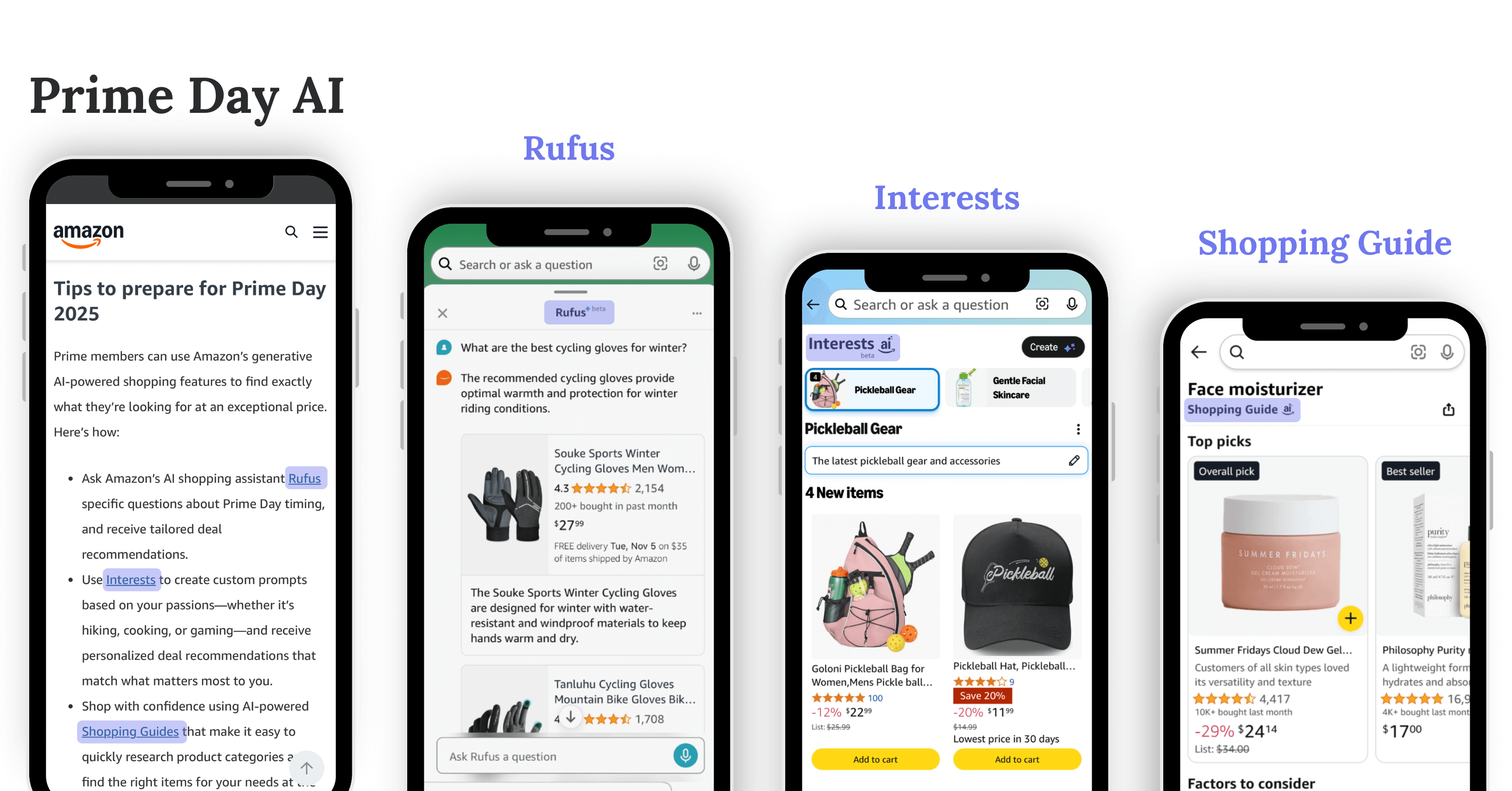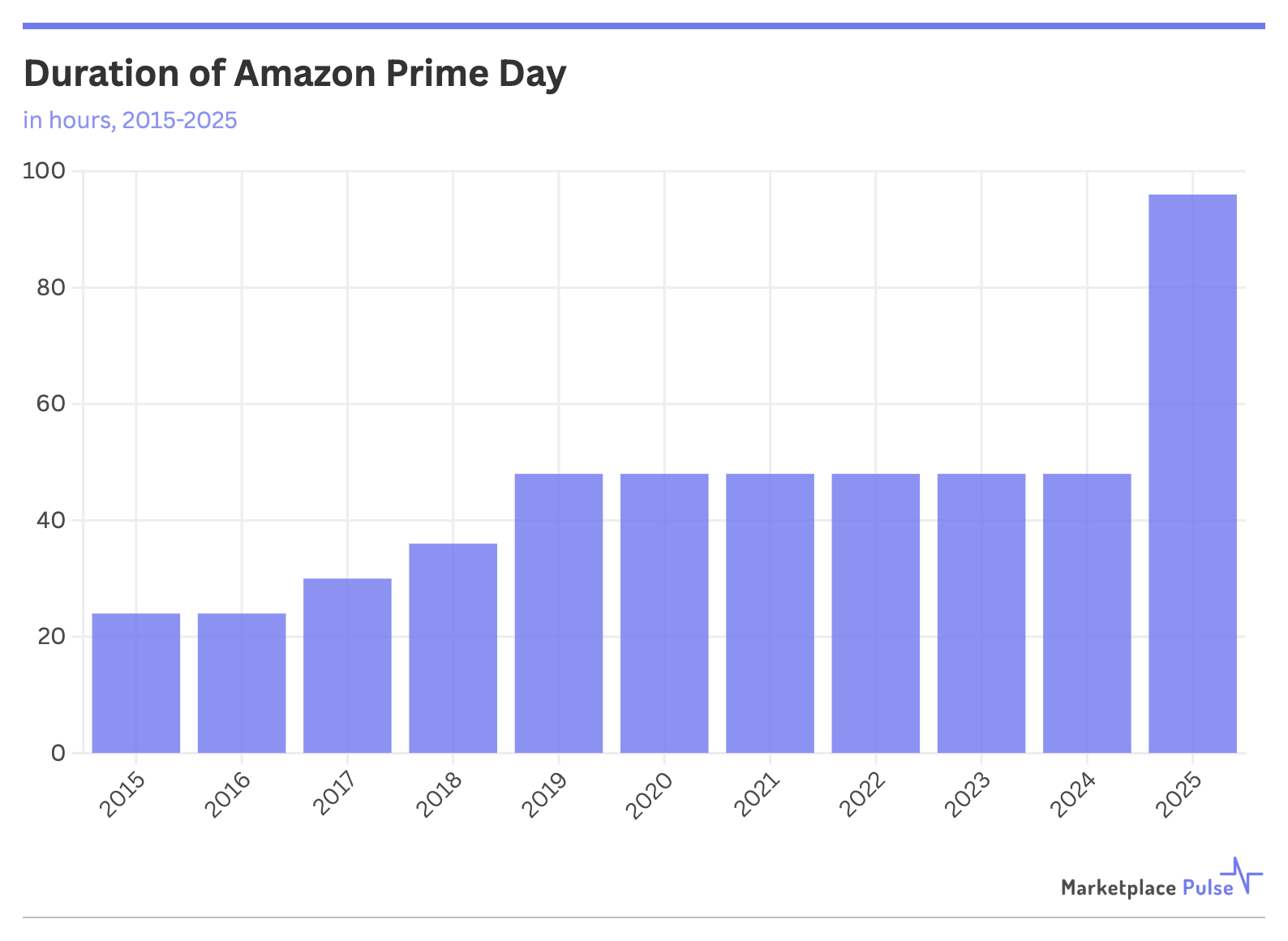The newly extended Prime Day 2025 will determine whether Amazon’s AI shopping features can solve the fundamental problem that has plagued the event for years: helping shoppers discover what they actually want among millions of deals.
Amazon’s increased focus on its AI shopping assistant Rufus as the featured shopping tool, combined with AI-powered features like “Interests” and “Shopping Guides,” represents the company’s most aggressive attempt yet to reclaim the deal discovery experience that TikTok has dominated over recent years.

The discovery problem isn’t new. Since 2019, shoppers have increasingly turned to social platforms like TikTok because Amazon had given up trying to personalize Prime Day, presenting instead an overwhelming yet infinitely long list of deals. Videos tagged with Prime Day hashtags grew from virtually zero in 2019 to 52 million views in 2022, then exploded to 400 million in 2023.
Amazon’s previous solutions have consistently failed. Its live video streams during Prime Day 2021 attracted just 30,000-70,000 viewers compared to TikTok’s 30 million. The Inspire feature, launched as a TikTok clone, got lost among the dozens of features Amazon’s app offers and was recently shut down.
Now Amazon is betting on Rufus et al to personalize Prime Day, but its evolution reveals the challenge ahead. While Rufus initially failed to help shoppers find the best product among the millions in the catalog, it has since become more confident. It now shows a curated list of up to five products that shoppers can buy with two clicks.
The problem is that Rufus is more confident but not more intelligent. When asked for the cheapest options, it sometimes responds with items that aren’t the cheapest. For marathon running shoes, it suggests options no runner or coach would recommend. The AI suffers from glaringly obvious hallucinations precisely when shoppers need accuracy most.
Prime Day 2025 – running from July 8 through July 11 – puts a significant spotlight on new features that attempt to address these shortcomings. In its event announcement, Amazon gives shoppers “tips to prepare for Prime Day 2025,” – most of which revolve around recently introduced AI features.
Rufus is primed to provide tailored deal recommendations, while Interests allows you to “create personalized shopping prompts tailored to your interests, price limits, and preferences.” AI Shopping Guides “help you reduce the time spent researching before you make a purchase by proactively consolidating key information you need alongside a relevant selection of products.”
But these additions risk making an already overwhelming experience more complex. Amazon is doubling Prime Day from two to four days while simultaneously promoting more AI features within an interface that shoppers have already abandoned for TikTok’s superior discovery experience. TikTok succeeds because it’s content-first, driven by human curation and entertainment value, while Amazon’s AI features remain catalog-first, trying to organize millions of undifferentiated products.

Prime Day 2025 isn’t just about selling more products – it’s about proving whether AI can actually improve shopping discovery or if it’s destined for Amazon’s feature graveyard alongside Posts and Inspire. Amazon described Rufus as a “once-in-a-generation transformation for Search, just like the Mosaic browser made the Internet easier to engage with three decades ago.” Prime Day 2025 will go a long way to testing whether that ambitious claim has any basis in reality.
If Rufus and its supporting AI features like Interests and Shopping Guides can’t solve discovery during Amazon’s most important shopping event, it raises fundamental questions about AI’s role in e-commerce. The answers will determine whether the future of shopping discovery belongs to AI algorithms or human curators on social platforms.

